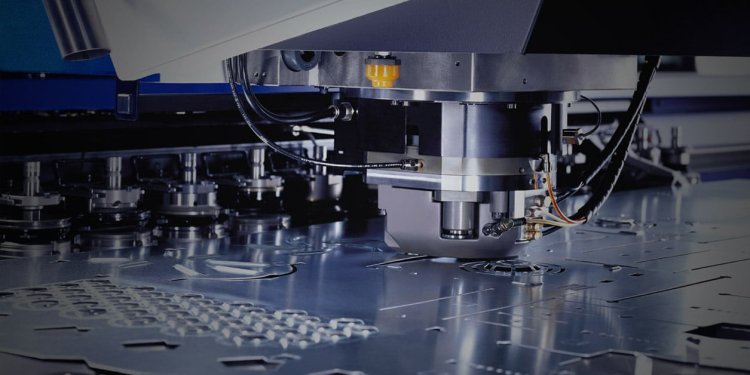Understanding Structural Steel Fabrication: Key Processes and Benefits
Structural steel fabrication is a cornerstone of modern construction, playing a critical role in everything from skyscrapers to bridges. If you’ve ever marveled at the sleek lines of a high-rise or the sturdy frame of a bridge, chances are, structural steel fabrication was behind it. This process isn’t just about creating strong metal structures; it involves a range of techniques and expertise that ensure these structures are safe, durable, and efficient. In this blog post, we’ll explore the key processes and benefits of structural steel fabrication, shedding light on why it’s such an essential part of the construction industry.
Share this Post to earn Money ( Upto ₹100 per 1000 Views )

Structural steel fabrication is a cornerstone of modern construction, playing a critical role in everything from skyscrapers to bridges. If you’ve ever marveled at the sleek lines of a high-rise or the sturdy frame of a bridge, chances are, structural steel fabrication was behind it. This process isn’t just about creating strong metal structures; it involves a range of techniques and expertise that ensure these structures are safe, durable, and efficient. In this blog post, we’ll explore the key processes and benefits of structural steel fabrication, shedding light on why it’s such an essential part of the construction industry.
Structural steel fabrication is the process of designing, cutting, welding, and assembling steel components to create frameworks for buildings and other structures. This process transforms raw steel into custom shapes and sizes that are then assembled on-site. It’s a critical component of both residential and commercial construction, ensuring that buildings are strong and stable.
Key Processes in Structural Steel Fabrication
1. Design and Planning
Every steel fabrication project begins with a detailed design. Structural engineers and architects collaborate to create blueprints that outline the specifications and dimensions of each steel component. This phase involves:
-
Structural Steel Design: Determining the load-bearing requirements and the structural integrity needed.
-
Blueprint Creation: Detailed drawings and specifications for the fabrication process.
2. Material Selection
Selecting the right type of steel is crucial. Steel used in fabrication must meet specific standards for strength and durability. Factors considered include:
-
Steel Grade: Different grades of steel have different properties, such as tensile strength and resistance to environmental factors.
-
Quality Control: Ensuring the steel meets industry standards and is free of defects.
3. Cutting and Shaping
Once the materials are selected, they need to be cut and shaped into the required dimensions. This is done using various techniques:
-
Steel Cutting: Using tools like plasma cutters or saws to achieve precise cuts.
-
Shaping: Forming steel into beams, columns, and other components using presses and rollers.
4. Welding and Assembly
After cutting and shaping, the steel components are welded together to form larger structures. This step involves:
-
Steel Welding: Joining pieces of steel using welding techniques like MIG or TIG welding.
-
Assembly: Connecting welded components to create the final framework.
5. Inspection and Testing
Before the steel structures are transported to the construction site, they undergo rigorous inspection and testing to ensure they meet all safety and quality standards. This includes:
-
Visual Inspections: Checking for any visible defects or irregularities.
-
Non-Destructive Testing: Techniques like ultrasonic testing to detect internal flaws.
6. Transportation and Erection
The final step involves transporting the fabricated steel components to the construction site and erecting them into place. This process includes:
-
Logistics Planning: Coordinating the transportation of large steel components.
-
Steel Erection Services: Using cranes and other equipment to assemble the steel framework on-site.
Benefits of Structural Steel Fabrication
Structural steel fabrication offers numerous advantages that make it a preferred choice in construction. Here’s why:
1. Strength and Durability
Structural steel is known for its exceptional strength-to-weight ratio. This means that it can support heavy loads while remaining relatively lightweight. This durability ensures that structures can withstand various stresses, including extreme weather conditions and seismic activity.
2. Flexibility in Design
One of the greatest benefits of steel fabrication is its flexibility. Steel can be customized to meet specific design requirements, allowing architects and engineers to create innovative and unique structures. This versatility extends to:
-
Custom Steel Fabrication: Tailoring steel components to fit complex designs.
-
Adaptability: Making adjustments as needed during the construction process.
3. Speed of Construction
Steel fabrication allows for faster construction times compared to traditional methods. Pre-fabricated steel components can be quickly assembled on-site, reducing the overall construction time. This efficiency is beneficial for:
-
Commercial Steel Fabrication: Meeting tight deadlines for commercial projects.
-
Industrial Steel Fabrication: Streamlining the construction of large-scale industrial facilities.
4. Cost-Effectiveness
While the initial cost of steel fabrication might be higher than some other materials, its durability and low maintenance requirements often result in cost savings over the long term. Factors contributing to cost-effectiveness include:
-
Reduced Maintenance: Steel structures require less upkeep compared to other materials.
-
Longevity: Steel’s resistance to environmental factors ensures a longer lifespan.
5. Environmental Benefits
Steel is a sustainable material with numerous environmental benefits. It’s fully recyclable, reducing the need for raw materials and minimizing waste. The environmental advantages include:
-
Recyclability: Steel can be recycled multiple times without losing quality.
-
Energy Efficiency: Steel structures often have better energy performance, contributing to greener buildings.
Conclusion
Structural steel fabrication is a fascinating and vital aspect of modern construction. From its robust design and versatility to its speed and cost-effectiveness, it’s clear why steel remains a top choice for building structures. By understanding the key processes and benefits of structural steel fabrication, you can appreciate the craftsmanship and engineering that go into creating the buildings and bridges we use every day. Whether you’re involved in construction or simply curious about how things are made, structural steel fabrication is a field that combines science, art, and practicality in an impressive way.
















